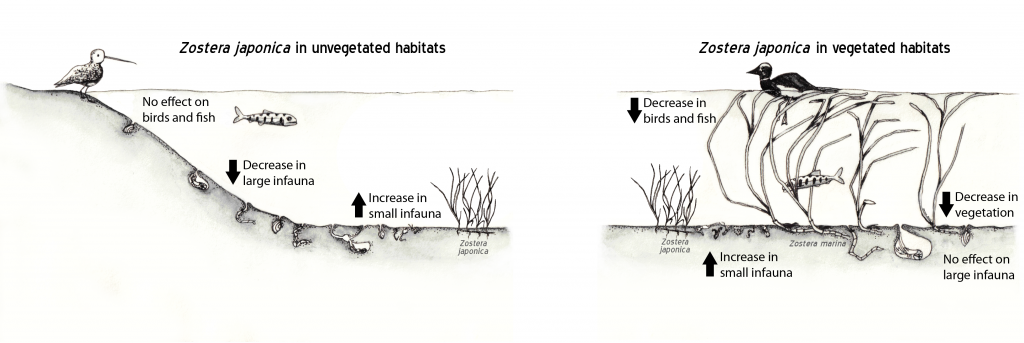Megan Mach (lab alum), Sandy Wyllie-Echeverria (UW seagrass researcher), and Kai Chan summarized 40 years of scientific research on Zostera japonica, a nonnative seagrass species in the Northeast Pacific, to investigate its effect on ecosystem processes and identify research gaps that might interfere with management objectives. Our analysis was especially relevant for ongoing policy discussion regarding the listing of Z. japonica as a Class C noxious weed, first on commercially managed aquaculture (oyster) mudflats in Washington State in 2012 and then on all mudflats in 2013.
Our review 1) demonstrates how research on Z. japonica has not been spatially or temporally adequate to address a change in policy, with gaps in the understanding of biological and environmental impacts, 2) sheds light on how gaps in quantitative research has resulted in failed eradication attempts for this nonnative species and others in the region (such as Spartina alterniflora in Washington State), and 3) discusses that, while Z. japonica negatively impacts native flora and fauna when it invades, as an ecosystem engineer it also brings benefits to species in high intertidal mud flats that have not been well explored. The communication of management goals would likely help direct future research used to inform their decision-making.
Mach, M. E., S. Wyllie-Echeverria, and K. M. A. Chan. 2014. Ecological effect of a nonnative seagrass spreading in the Northeast Pacific: A review of Zostera japonica. Ocean & Coastal Management 102:375–382. http://dx.doi.org/10.1016/j.ocecoaman.2014.10.002 PDF

